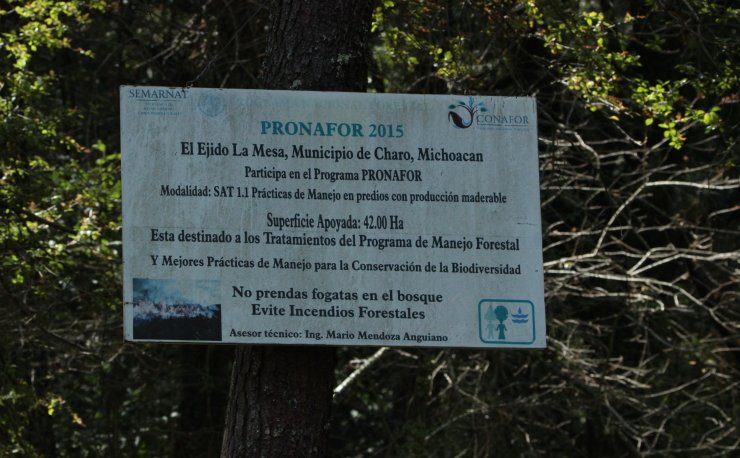
Last week I wrote about my first experience with a new site that a friend thought looked promising when he saw it on Google Maps. My friend was right. I had such a good time there that I went back the very next week, to see what I could find by walking a bit higher into the woods. I was not disappointed, although I was pretty tired after a fairly strenuous 5-mile walk up-and-downhill.
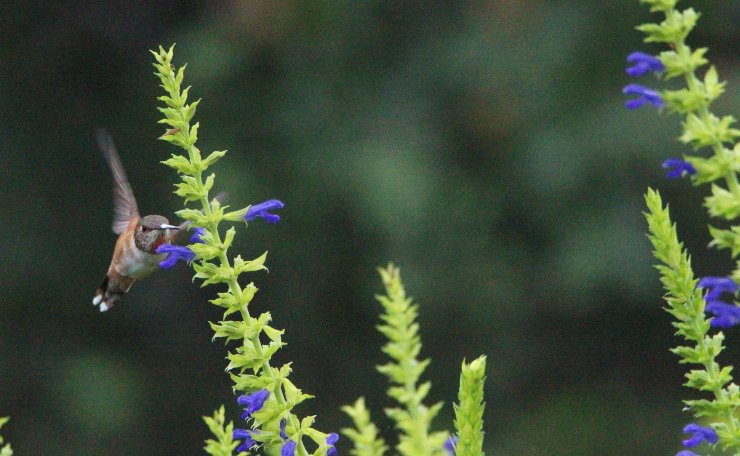 I got good photos of this recently-arrived Allen’s Hummingbird feeding on a Salvia mexicana.
I got good photos of this recently-arrived Allen’s Hummingbird feeding on a Salvia mexicana.
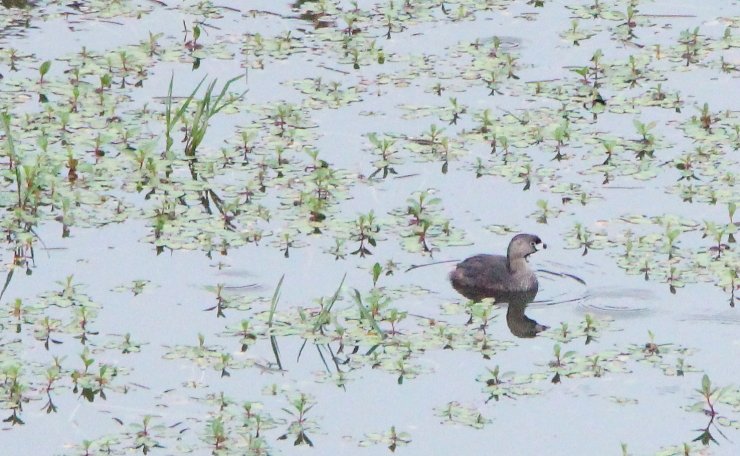 This time I got to see Pied-billed and Least Grebes at the reservoir, along with last week’s collection of Egrets.
This time I got to see Pied-billed and Least Grebes at the reservoir, along with last week’s collection of Egrets.
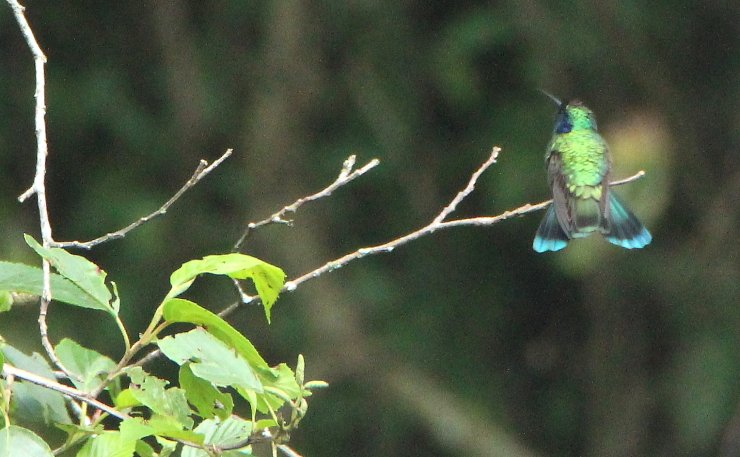 Another photo taken from too far away… But check out the tail on this Mexican Violetear!
Another photo taken from too far away… But check out the tail on this Mexican Violetear!
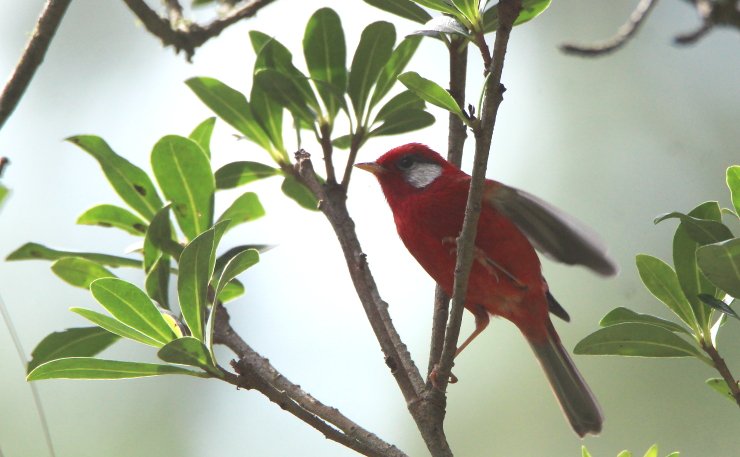 The presence of this Red Warbler let me know I had climbed high enough into the pine-oak forest.
The presence of this Red Warbler let me know I had climbed high enough into the pine-oak forest.
This experience of finding an entirely new, but very birdy, site is nothing unusual for me. While there are a few more birders in Morelia each year, I had no one to guide me when I started out here. And E-Bird only listed a couple of high-quality sites back then. So I had to learn to locate my own sites, a process which still continues today.
As I pointed out at the beginning of the pandemic, this can be a very valuable skill right now. Following rare-bird alerts, or visiting urban parks, are not the wisest choice for our socially distanced times. Find your own sites, and you can have them all to yourself!
Of my current 15 favorite sites, only five were anywhere near well-known when I found them, and only three are likely to be populated enough for me to avoid during this year. That leaves me lots of options for pandemic birding! And since this philosophy has worked well for me, I thought I would share some tips with you, while amusing myself with some song titles from my youth (my age is showing):
Macarthur’s Park is melting: Most urban parks designed for people, not nature, were never the best choices for birding, and are even less so in 2020. I understand that the really large ones, however, can be fascinating biological islands, especially during migration. So if you can get to New York’s Central Park, San Francisco’s Golden Gate Park, or Mexico City’s Chapultepec Park, I’m sure it will be worthwhile… in 2021. (Zero sites on my top 15 list)
I have had much better experiences with the nature reserves located around the edges of Morelia. But they are still too populated for my 2020 tastes. I look forward to visiting them again after the vaccine comes out. (3 sites, including one outside the city but much used by morelianos)
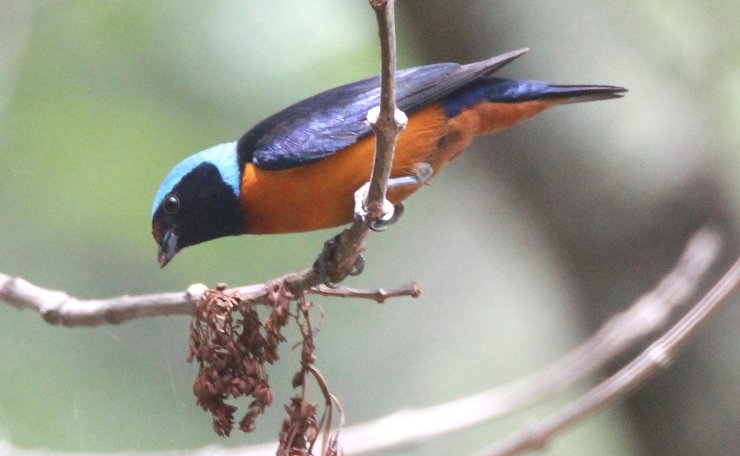 It may be too crowded in Morelia’s Los Filtros, but there are still Elegant Euphonias there.
It may be too crowded in Morelia’s Los Filtros, but there are still Elegant Euphonias there.
I heard it through the grapevine: Birders are, of course, the very best source of site information. But I don’t know many in my area. Nowadays, I am happy to be the one recommending (and showing off) sites. (2 sites)
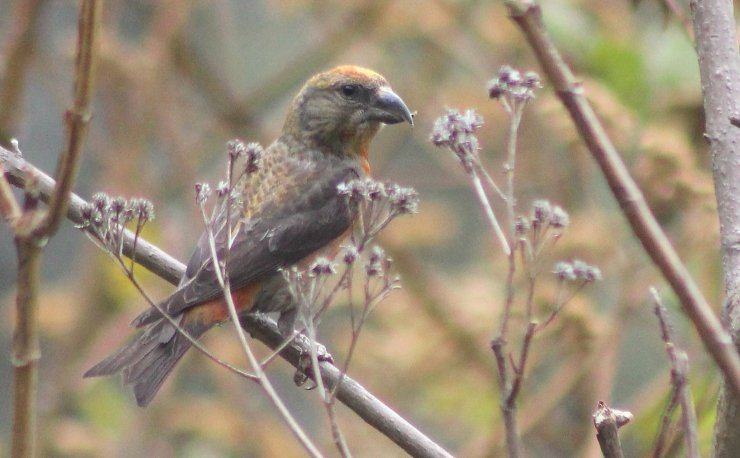 A falconer and occasional birder told me about Laurelito, and that’s where I discovered Red Crossbills.
A falconer and occasional birder told me about Laurelito, and that’s where I discovered Red Crossbills.
I can see for miles and miles: Use Google Maps. My computer goes straight to this page as soon as I type the letter “g” into the top bar. I assume there are other platforms that work as well, but I don’t know what they are. Just looking for country roads to explore, or, even better, where those roads end, can produce lots of interesting possibilities. (3 sites)
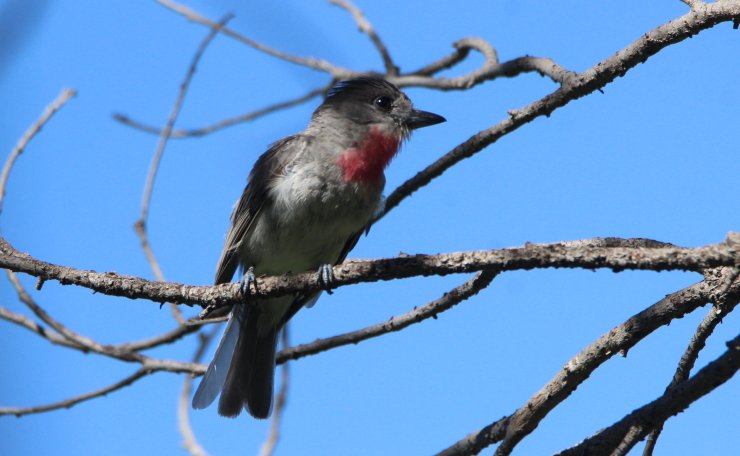 I found La Escalera on Google Maps. Then I found this Rose-throated Becard at La Escalera.
I found La Escalera on Google Maps. Then I found this Rose-throated Becard at La Escalera.
How can you get more out of Google Maps? Follow these guidelines:
Ain’t no mountain high enough, ain’t no valley low enough: Use the terrain function and find the highest and lowest points within your area. I decided how far I was willing to drive, and looked for the most extreme altitudes available within that range. In my case, I can travel up to 3,000 meters (10,000 feet), or down to 1,000 meters (3,300 feet) within a 40-mile radius from Morelia. (2 of my absolute favorite sites)
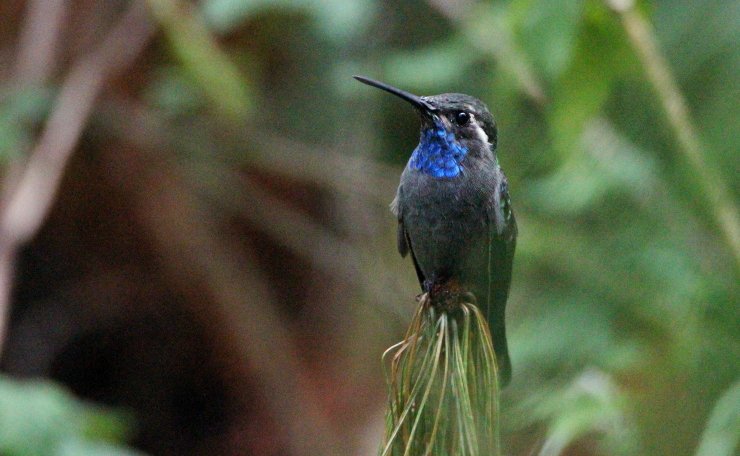 If I go up a thousand meters, I can see the Blue-throated Mountain Gem.
If I go up a thousand meters, I can see the Blue-throated Mountain Gem.
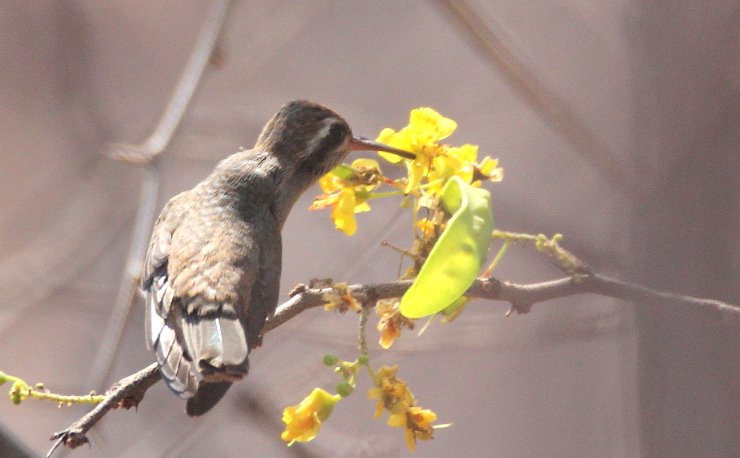 While travellng down gives me the almost colorless, but oh-so-endemic, Dusky Hummingbird.
While travellng down gives me the almost colorless, but oh-so-endemic, Dusky Hummingbird.
Borderline: Use the Satellite option, to get an overview of habitats. The points where different habitats meet are often very productive. This is what drew my friend’s attention to Las Mesas, described at the beginning of this post. (1 site, although several other counted elsewhere could be included here.)
Cry me a river: Look for water in any form. Rivers and streams are good, lakes are better, and extensive marshlands are the absolute best. (1 site, although, again, there is a lot of overlap here with other sites already counted.)
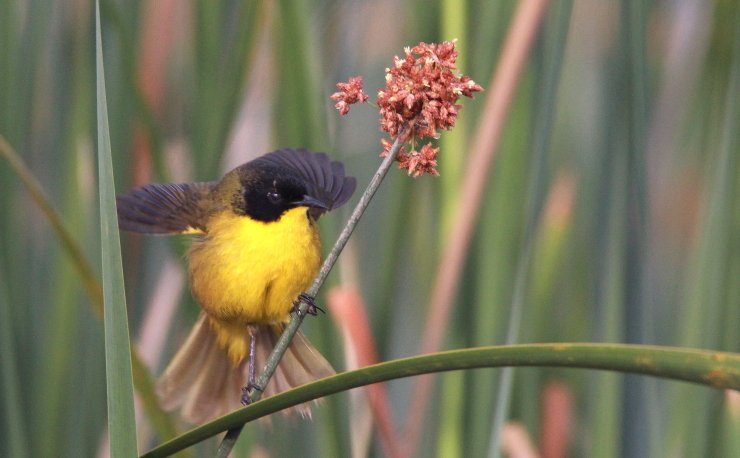 I need some top-quality marshland to find the hyper-endemic Black-polled Yellowthroat.
I need some top-quality marshland to find the hyper-endemic Black-polled Yellowthroat.
Country road, take me home: As you are travelling to one site, make sure you check out other sites on the way that look promising. They don’t always join my favorites list, but several sites I found this way have. (3 sites)
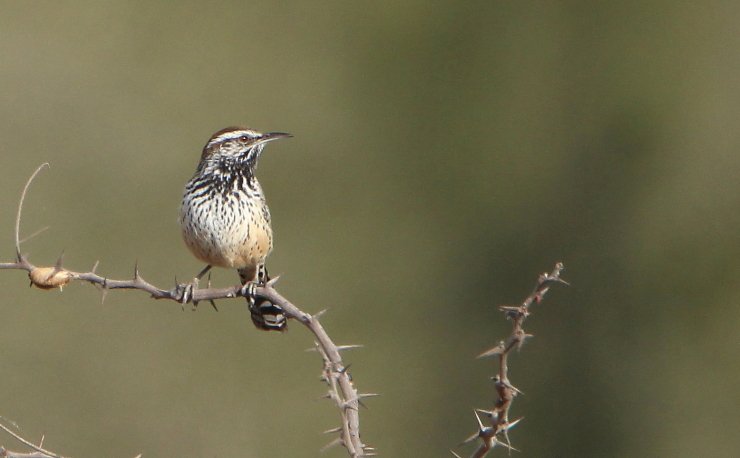 I stumbled across Tres Cerritos, where it is just dry enough for Cactus Wrens.
I stumbled across Tres Cerritos, where it is just dry enough for Cactus Wrens.
Whatever you do, don’t sit at home worrying about all the other people crowding your usual spots. Find some new ones!











Leave a Comment